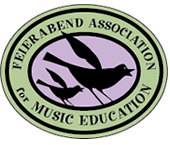Points to ponder as you build your program.
Last week I had two breakthroughs in my classes. My 1st graders tried the game “Oh Dear, What Can the Meter Be?” for the first time, and to my surprise, they got every single musical example correct! Historically, this has not been the case. Often I see children put the micro beat on their bodies correctly, only to see them struggle with determining the meter (groups of 2s or 3s). However, this year they just got it. It was intuitive. And they felt so proud of their success.
Later that week, my 2nd graders, who have been doing Units 2 and 4 concurrently, tried decoding Patterns Set 4A for the first time (decoding familiar patterns on mi-re-do). Again, the students got almost all of the patterns correct on the first try. At first I was dumbfounded. After all, my current 4th graders are STILL struggling to decode on solfege, but then I realized what was happening. Let me back up a bit.
When I arrived at my school a few years ago, the children were used to playing on computers in music class. They played with music software, “composed” on Garageband, and learned facts about music. However, they never sang, danced, played instruments, or actively made music. They never experienced the “Doing” part of music. As I got my classroom ready for my first day of school, I dismantled the entire music computer lab and sent it up to the high school. I introduced age appropriate First Steps in all of my classes to begin making all of my students, “tuneful, beatful, and artful.” I focused entirely on the “Doing” part of music and building musical skills in all of my students.
As I expected, the smallest students picked up musical skills the fastest. The little Pre-K and Kindergarten students soaked up vocal exploration, echo songs, and the rest of the 8 Parts of the First Steps curriculum. Their little brains lit up during the activities, and their neurofiber grew and grew. They are now in 1st and 2nd grade. The little kids who had 3 full years of First Steps were now the kids who are able to intuitively feel meter and intuitively decode melodic patterns using solfege. The students who were older when they started actually “Doing” music are not a lost cause; they are still more musical than if I hadn’t intervened and they had continued to play on the computers. But, they will never reach the same level of fluency that the younger children are achieving. They need more help with decoding. They need some scaffolding to make up for the lack of foundation that they had when they were younger.
I’ve seen a lot of posts on the Feierabend Fundamentals Facebook page about challenges with decoding, particularly in Unit 4, when students are decoding melodic patterns on solfege for the first time. This is especially true if the teacher is starting Conversational Solfege for the first time, and the students are older beginners. Why is it so difficult for older beginners to decode? Because their brains have not been wired for the aural skills needed to decode. They may be matching pitch, keeping the beat, and performing with expression (they may be “tuneful, beatful, and artful”), but they may not have the same degree of musical intelligence as if they had started with a full foundation at an earlier age.
I am learning to celebrate the successes of my youngest students. I am excited to think about what my current 1st graders will be able to do when they are in 5th grade! And I am also learning to have patience and compassion for my current 4th and 5th graders. Are they able to decode as easily as my younger kids? No. However, they are singing beautifully, they are dancing with expression, and they are coming together in community as compassionate humans.
As Lillie Feierabend says, “It’s Wednesday; everyone takes a step forward.” I will continue to strive for every student to take a step forward today with their literacy skills and the Conversational Solfege curriculum. But, I also need to have patience and compassion for my older students for whom decoding is not yet as intuitive, and remember that there is no greater gift that I can give my students than synchronizing together as a community through music.
